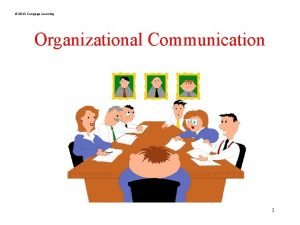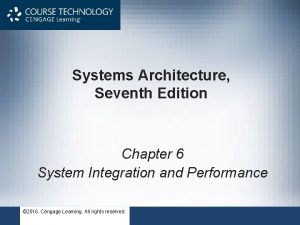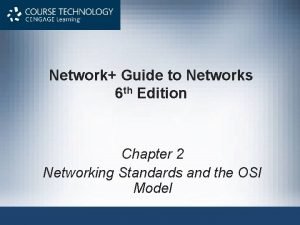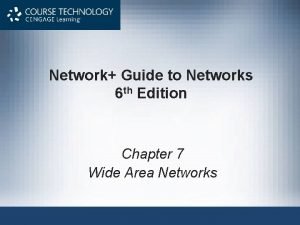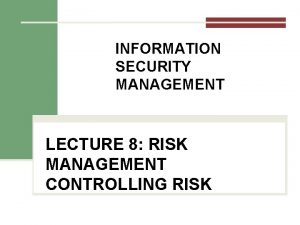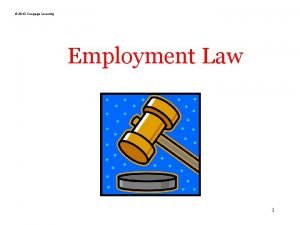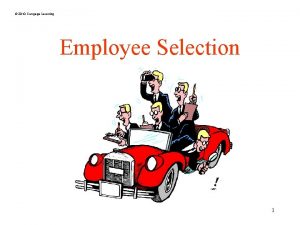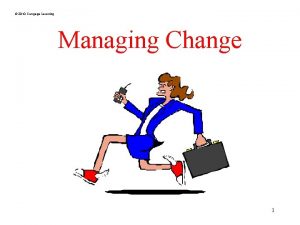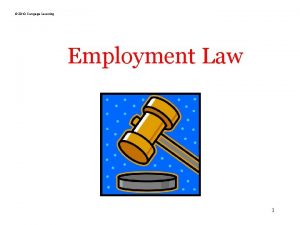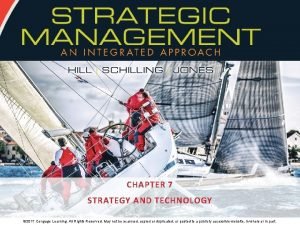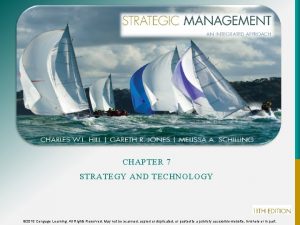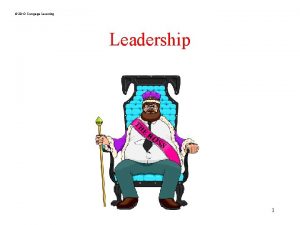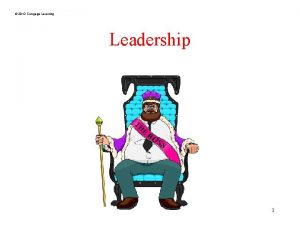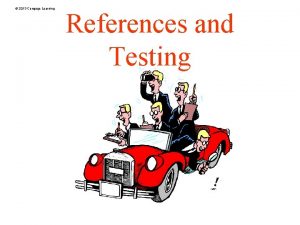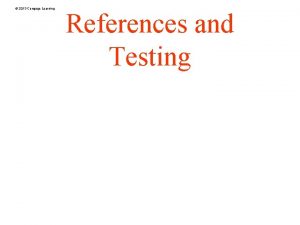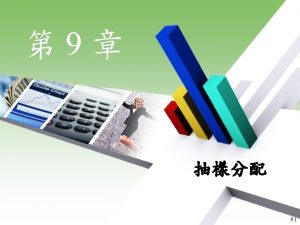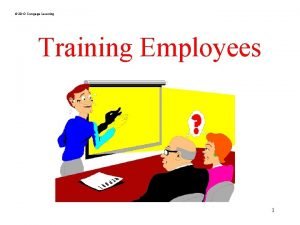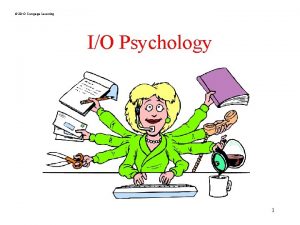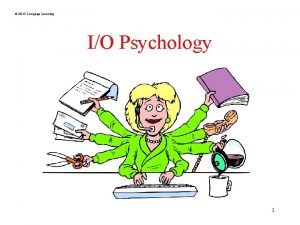Chapter 7 STRATEGY AND TECHNOLOGY 2010 Cengage Learning


























- Slides: 26

Chapter 7 STRATEGY AND TECHNOLOGY 2010 Cengage Learning. All Rights Reserved. May not be copied, scanned, or duplicated, in whole or in part, except for use as permitted in a license distributed with a certain product or service or otherwise on a password-protected website for classroom use. 7 -

Learning Objectives • Understand the tendency toward standardization in hi-tech markets • Describe strategies used to establish a technology as the standard • Explain the cost structure of hi-tech firms and articulate strategic implications • Explain nature of technological paradigm shifts and their implications 2010 Cengage Learning. All Rights Reserved. May not be copied, scanned, or duplicated, in whole or in part, except for use as permitted in a license distributed with a certain product or service or otherwise on a password-protected website for classroom use. 1 -

“Whoever is first in the field and awaits the coming of the enemy, will be fresh for the fight; whoever is second in the field and has to hasten to battle will arrive exhausted. - Sun-Tzi 2010 Cengage Learning. All Rights Reserved. May not be copied, scanned, or duplicated, in whole or in part, except for use as permitted in a license distributed with a certain product or service or otherwise on a password-protected website for classroom use. 7 -

High-Technology Industries “…those in which the underlying scientific knowledge that companies in the industry use is advancing rapidly… (as) are the attributes of the products/services that result from its application are also advancing rapidly. ” Technology is: • Scientific knowledge used in production of goods or services • Accounting for a larger share of economic activity • Revolutionizing the product or production system in industries not thought of as high-tech 2010 Cengage Learning. All Rights Reserved. May not be copied, scanned, or duplicated, in whole or in part, except for use as permitted in a license distributed with a certain product or service or otherwise on a password-protected website for classroom use. 7 -

Technical Standards and Format Wars “…standards are a set of technical specifications that producers adhere to when making the product or a component of it. Format wars • One standard will come to dominate a market. • Many battles in high-tech industries are companies competing to set standard. Product differentiation and competitive advantage are based on a technical standard. 2010 Cengage Learning. All Rights Reserved. May not be copied, scanned, or duplicated, in whole or in part, except for use as permitted in a license distributed with a certain product or service or otherwise on a password-protected website for classroom use. 7 -

Technical Standards for Personal Computers Figure 7. 1 2010 Cengage Learning. All Rights Reserved. May not be copied, scanned, or duplicated, in whole or in part, except for use as permitted in a license distributed with a certain product or service or otherwise on a password-protected website for classroom use. 7 -

Benefits of Standards o Guarantee compatibility between products & compliments o Reduce consumer confusion o Reduce production costs o Reduce risks associated with supplying complementary products Standards lead to low-cost and differentiation advantages for companies. 2010 Cengage Learning. All Rights Reserved. May not be copied, scanned, or duplicated, in whole or in part, except for use as permitted in a license distributed with a certain product or service or otherwise on a password-protected website for classroom use. 7 -

3 Ways Standards Emerge: 1. Firms lobby government to mandate industry standard- public domain. 2. Standards often set by cooperation among firms/forums. 3. Standards often selected by market demand. • • • Network effects Positive feedback loop Lockout 2010 Cengage Learning. All Rights Reserved. May not be copied, scanned, or duplicated, in whole or in part, except for use as permitted in a license distributed with a certain product or service or otherwise on a password-protected website for classroom use. 7 -

Positive Feedback VCR Market in Figure 7. 2 2010 Cengage Learning. All Rights Reserved. May not be copied, scanned, or duplicated, in whole or in part, except for use as permitted in a license distributed with a certain product or service or otherwise on a password-protected website for classroom use. 7 -

Winning a Format War Successful strategies revolve around finding ways to make network effects work in their favor and against their competitors: o Ensure supply of complement- Plus product itself o Killer applications- New products so compelling customers adopt rapidly killing demand for competition o Aggressively price/market- Price product low to increase installed base, price complements high for profits o Cooperate with competitors-Speed up adoption o License format- Reduce incentive for competitors to develop own 2010 Cengage Learning. All Rights Reserved. May not be copied, scanned, or duplicated, in whole or in part, except for use as permitted in a license distributed with a certain product or service or otherwise on a password-protected website for classroom use. 7 -

Cost Structures in High-Tech Industries Figure 7. 3 2010 Cengage Learning. All Rights Reserved. May not be copied, scanned, or duplicated, in whole or in part, except for use as permitted in a license distributed with a certain product or service or otherwise on a password-protected website for classroom use. 7 -

Law of Diminishing Returns “To produce more of a good, a company… hires more labor… invests in more plant/machinery… additional resources… are not as productive… increasing marginal costs. ” 2010 Cengage Learning. All Rights Reserved. May not be copied, scanned, or duplicated, in whole or in part, except for use as permitted in a license distributed with a certain product or service or otherwise on a password-protected website for classroom use. 12

Strategic Significance of High-Tech Cost Structure Fixed costs of developing product very high, but costs of producing additional units are low: o o If can shift from cost structure with increasing marginal costs to high fixed costs but low marginal costs- profitability may increase. When company faces high fixed costs/low marginal costs, it should drive prices down to drive up volume. Strategy of pricing low to drive volume to reap wider profit margins is central to business model of some successful high-tech companies. 2010 Cengage Learning. All Rights Reserved. May not be copied, scanned, or duplicated, in whole or in part, except for use as permitted in a license distributed with a certain product or service or otherwise on a password-protected website for classroom use. 7 -

Impact of Imitation on First Mover Profits Figure 7. 4 2010 Cengage Learning. All Rights Reserved. May not be copied, scanned, or duplicated, in whole or in part, except for use as permitted in a license distributed with a certain product or service or otherwise on a password-protected website for classroom use. 7 -

First-Mover Advantages First to develop/pioneer revolutionary products can lead to enduring competitive advantage 5 key Advantages: • • • Opportunity to exploit network effects and positive feedback loops Ability to establish significant brand loyalty Ability to ramp up sales volume early Ability to create switching costs for customers Ability to accumulate valuable knowledge Being first-mover does not guarantee success. Success depends on first-mover strategy pursued. 2010 Cengage Learning. All Rights Reserved. May not be copied, scanned, or duplicated, in whole or in part, except for use as permitted in a license distributed with a certain product or service or otherwise on a password-protected website for classroom use. 7 -

First-Mover Disadvantages 1. Pioneering cost- develop technology & distribution channels & educate customer 2. Prone to mistakes- uncertainties in new market 3. Risk building wrong resources & capabilities- mass-market may differ from the needs of early adopters 4. May invest in inferior/obsolete technology- if underlying technology advancing rapidly 2010 Cengage Learning. All Rights Reserved. May not be copied, scanned, or duplicated, in whole or in part, except for use as permitted in a license distributed with a certain product or service or otherwise on a password-protected website for classroom use. 7 -

Exploiting First-Mover Advantages Strategies 1. Going it alone- develop/market innovation 2. Strategic alliance/joint venture- develop/market innovation with other companies 3. License innovation- let them develop the market Choosing strategy: ? Does company have complementary assets to exploit innovation? ? How difficult for imitators to copy innovation? ? Are there capable competitors who could rapidly imitate innovation? 2010 Cengage Learning. All Rights Reserved. May not be copied, scanned, or duplicated, in whole or in part, except for use as permitted in a license distributed with a certain product or service or otherwise on a password-protected website for classroom use. 7 -

Strategies for Profiting from Innovation Table 7. 1 2010 Cengage Learning. All Rights Reserved. May not be copied, scanned, or duplicated, in whole or in part, except for use as permitted in a license distributed with a certain product or service or otherwise on a password-protected website for classroom use. 7 -

Technological Paradigm Shifts New technologies emerge that: • • • Revolutionize structure of industry Dramatically alter nature of competition Requires firms adopt new strategies More likely to occur with: • Natural limits to technology- established technology is mature & approaching natural limit • New disruptive technology- entered marketplace and taking root in niches poorly served by firms using established technology 2010 Cengage Learning. All Rights Reserved. May not be copied, scanned, or duplicated, in whole or in part, except for use as permitted in a license distributed with a certain product or service or otherwise on a password-protected website for classroom use. 7 -

Technology S-Curve Figure 7. 5 2010 Cengage Learning. All Rights Reserved. May not be copied, scanned, or duplicated, in whole or in part, except for use as permitted in a license distributed with a certain product or service or otherwise on a password-protected website for classroom use. 7 -

Established and Successor Technologies Figure 7. 6 2010 Cengage Learning. All Rights Reserved. May not be copied, scanned, or duplicated, in whole or in part, except for use as permitted in a license distributed with a certain product or service or otherwise on a password-protected website for classroom use. 7 -

Swarm of Successor Technologies Figure 7. 7 2010 Cengage Learning. All Rights Reserved. May not be copied, scanned, or duplicated, in whole or in part, except for use as permitted in a license distributed with a certain product or service or otherwise on a password-protected website for classroom use. 7 -

Disruptive Technology “…new technology that gets its start away from mainstream of market and invades main market as functionality improves. . . ” o Revolutionizes industry structure & competition o Causes technological paradigm shift Often causes decline of established companies –because they listen to customers who say they do not want it. 2010 Cengage Learning. All Rights Reserved. May not be copied, scanned, or duplicated, in whole or in part, except for use as permitted in a license distributed with a certain product or service or otherwise on a password-protected website for classroom use. 7 -

Implications of Paradigm Shifts. Established Companies o Knowledge about how disruptive technologies can revolutionize markets is valuable asset. o Important for established firms to invest in newly emerging technologies that may become disruptive. o Commercialization may require different value chain & cost structure. Chances of success in developing & commercializing disruptive technology will be enhanced if it is placed in its own organization. 2010 Cengage Learning. All Rights Reserved. May not be copied, scanned, or duplicated, in whole or in part, except for use as permitted in a license distributed with a certain product or service or otherwise on a password-protected website for classroom use. 7 -

Implications of Paradigm Shifts- New Entrants Advantages: o o No pressure to continue out-of-date business. No worry about established customer base, distribution channels, or suppliers. Challenges: o o Constrained by lack of capital Need to manage organizational problems from rapid growth Find way to take technology from small niche to the mass-market Go it alone or partner with established company 2010 Cengage Learning. All Rights Reserved. May not be copied, scanned, or duplicated, in whole or in part, except for use as permitted in a license distributed with a certain product or service or otherwise on a password-protected website for classroom use. 7 -

“The guy with the competitive advantage is the one with the best technology. ” - Walter Wriston “A business’s flexibility in adapting to change and market dynamics will mark the winners and losers in this fast-changing Internet Age. ” - Michael Dell 2010 Cengage Learning. All Rights Reserved. May not be copied, scanned, or duplicated, in whole or in part, except for use as permitted in a license distributed with a certain product or service or otherwise on a password-protected website for classroom use. 7 -
 2010 cengage learning
2010 cengage learning Course technology cengage learning
Course technology cengage learning Course technology cengage learning
Course technology cengage learning Course technology cengage learning
Course technology cengage learning Course technology cengage learning
Course technology cengage learning Chapter 13 medical math assignment sheet
Chapter 13 medical math assignment sheet The human respiratory system chapter 7 handout
The human respiratory system chapter 7 handout Chapter 6:2 interpreting word parts
Chapter 6:2 interpreting word parts Cengage chapter 5
Cengage chapter 5 Cengage learning heart diagram
Cengage learning heart diagram South-western cengage learning
South-western cengage learning 2009 delmar cengage learning
2009 delmar cengage learning Cengage learning heart diagram
Cengage learning heart diagram Challenge word building medical terminology
Challenge word building medical terminology Cengage learning australia
Cengage learning australia Measuring and recording apical pulse
Measuring and recording apical pulse Cengage learning
Cengage learning Cengage learning
Cengage learning Wadsworth cengage learning
Wadsworth cengage learning Cengage learning
Cengage learning Cengage learning plant cell
Cengage learning plant cell Cengage learning
Cengage learning Cengage learning
Cengage learning Brooks cole cengage learning
Brooks cole cengage learning 2014 cengage learning accounting answers
2014 cengage learning accounting answers Copyright cengage learning. powered by cognero
Copyright cengage learning. powered by cognero Cengage learning
Cengage learning
